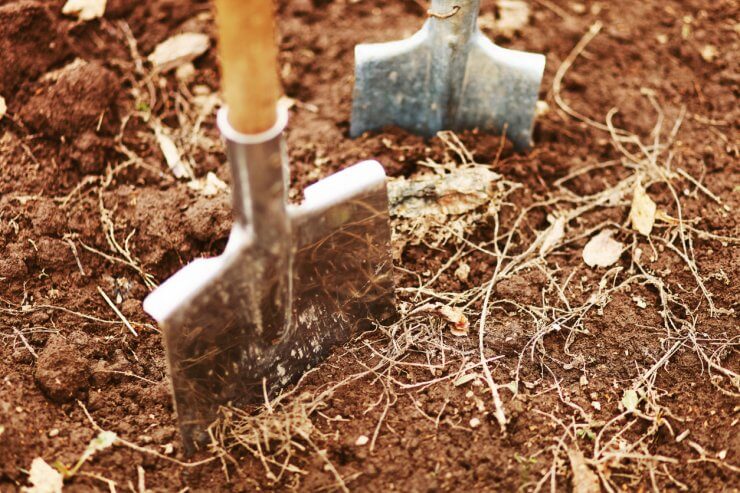
If you’re at all like me, you’re probably thinking about next year’s garden the minute the thermometer starts to drop. Heck, I’m still enjoying garden-fresh Swiss chard, and I’m thinking about what I want to plant in the spring. While fall and winter aren’t really the time to put tomato seeds in the ground, learning how to prepare your soil for winter can give you a big headstart on those delicious garden veggies coming up in spring and summer.
Of course, if you’re in some of the warmer planting zones, you may well be able to keep some hardy vegetables like Brussels sprouts or kale going over the winter. Even then, winter can be an excellent time to give your soil a break.
Discover 7 top tips for growing, harvesting, and enjoying tomatoes from your home garden—when you access the FREE guide The Best Way to Grow Tomatoes, right now!

How to prepare soil for winter in 7 easy steps
Before we can think about how to prepare soil for winter, let’s start with what might still be in the garden.
1. Harvest your remaining vegetables. If the weather holds out and your vegetables are happy, let them grow. But as the temperatures drop, you’ll need to think about harvesting, curing, and storing those winter squash, potatoes, root vegetables, and late-season greens. (Incidentally, you can leave many root crops, such as carrots, in the ground for as long as you want. Just be sure to pull them out before the ground freezes.)
2. Discard diseased plants. If you have any diseased plants in the garden, now is the time to get rid of them. Pull them up, roots and all. Your best bet is to burn them or throw them in the trash.
3. Pull out any weeds. This is pretty self-explanatory. No need to have weed seeds in the ground come spring.
4. Pull your annuals. All of those annual plants make great compost. The tomato and squash vines, the basil stems, the pepper leaves – you can pull all these up and throw them right into the compost pile, where they’ll turn into nutrients for future planting. It’s okay to leave roots, by the way. They’ll decompose and benefit the soil over the winter.
5. Or don’t. There is a bit of debate about how to prepare soil for winter when it comes to cleaning up the garden. Some gardeners opt to leave the garden alone and let nature do its thing. They may help things along by cutting down any remaining vegetable stalks or vines, but otherwise, they leave the garden alone.
6. Add compost. Whichever method you choose, this is a great time to add compost to your garden. All that rich finished compost will nourish the soil, so it’s healthy and ready for spring planting. Like cleaning up plant remains, there are two schools of thought here. You can gently dig the compost into the garden, helping to spread the nutrients around. Alternatively, you can add a layer of compost on top of the soil and leave it, knowing that it will break down and work its way into the soil throughout the winter.
7. Add mulch. Especially in the fall, mulch is easy to come by. And it’s free! All those leaves that are on the ground now make an ideal mulch. Run your mower over them to chop them up and add them to your garden. Winter mulching works much the same as summer mulching. It helps regulate soil temperature, keeps topsoil in place, helps prevent weed growth, and as the mulch decomposes, it adds nutrients to the soil.
What about cover crops?
Winter cover crops are a popular means of improving soil over the winter. Winter rye is very hardy, and the deep roots keep your soil loose. In the spring, you’ll have to mow it and turn it under, but it adds a lot of nutrients to the soil. You can also dry it and use it as straw mulch.
In considering how to prepare soil for winter, you’re taking steps toward a healthy, vibrant garden in the spring and summer. So if you’re ready for a bumper crop, now is the time to start.
What steps do you take to prepare your garden soil for the winter?
Discover 7 top tips for growing, harvesting, and enjoying tomatoes from your home garden—when you access the FREE guide The Best Way to Grow Tomatoes, right now!





I leave a lot of annuals in place, because there are many species of beneficial insects hibernating inside the stalks, or in curled leaves. Once they’ve woken up in spring and dispersed anything I can’t leave in place can be composted.
Great article! I have been leaving everything as it is, of course chopping it at the crown, but ai also have a weed barrier over my whole garden where I don’t have plants, I may pull that up for winter and lay compost, that would give me a good start in spring!
Thanks for this write up!